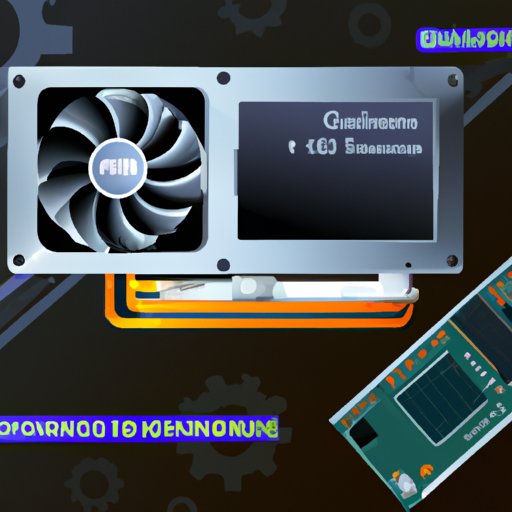Introduction
A GPU (Graphics Processing Unit) is an essential component of a computer system, responsible for generating images and video on the display. It is important to regularly check the health of your GPU to make sure it is functioning properly and not causing any problems with your computer’s performance. In this article, we will explore various methods to check the health of your GPU.
Use Manufacturer-Provided Diagnostic Tools
Most major GPU manufacturers provide their own diagnostic tools that can be used to check the health of your GPU. These tools are designed to detect any potential issues with your GPU and provide information about its current status. Using these tools is the easiest way to check your GPU health, as they are specifically designed for this purpose.
To access and use these tools, simply visit the website of the GPU manufacturer and look for the “Support” or “Downloads” section. Here you should be able to find the diagnostic tool for your specific GPU model. Once you have downloaded and installed the tool, you will be able to run it and check the status of your GPU.
Monitor GPU Temperature
The normal operating temperature range for GPUs is between 50-85 degrees Celsius. If your GPU is running at temperatures outside of this range, it could be a sign of an issue with your GPU. To monitor your GPU’s temperature, you can use a third-party application such as MSI Afterburner or GPU-Z.
These applications allow you to view your GPU’s current temperature, as well as set temperature thresholds and receive alerts when your GPU reaches a certain temperature. This can be useful for detecting potential issues with your GPU before they become serious.
Check for Driver Updates
Drivers are pieces of software that enable your computer to communicate with hardware components, such as your GPU. Outdated drivers can cause issues with your GPU’s performance, so it is important to regularly check for driver updates and install them if necessary. To do this, you can use the Device Manager, which is included in Windows.
In the Device Manager, you can view the list of installed devices and check for driver updates by right-clicking on the device and selecting “Update Driver”. You can also visit the website of the GPU manufacturer to check for the latest available drivers for your specific GPU model.
View GPU Usage in Task Manager
Task Manager is a built-in Windows application that allows you to view information about the currently running processes on your computer. You can use Task Manager to view your GPU’s current usage, which can help you determine if there are any issues with your GPU’s performance. To view your GPU’s usage, simply open Task Manager and select the “Performance” tab.
Here you should be able to see a graph of your GPU’s current usage. If you notice any spikes or dips in the graph, it could be a sign of a potential issue with your GPU.
Run Graphics Card Benchmarks
Graphics card benchmarks are tests that measure the performance of your GPU. Running these tests can help you determine if there are any issues with your GPU’s performance. There are several third-party applications available that can be used to run these benchmarks, such as 3DMark or Unigine Heaven.
Once you have downloaded and installed one of these applications, you can simply run the benchmark test and view the results. If you notice any issues with your GPU’s performance, you may need to investigate further.
Check GPU Memory Allocation
GPU memory allocation is the amount of RAM that is allocated to your GPU. If this number is too low, it can cause issues with your GPU’s performance. To check your GPU’s memory allocation, you can use the Windows Resource Monitor.
In the Resource Monitor, you can view the amount of memory that is currently allocated to your GPU. If this number is too low, you may need to adjust the settings in your GPU’s control panel to increase the amount of memory that is allocated.
Investigate Overclocking Settings
Overclocking is the process of increasing the speed of your GPU beyond its default settings. While this can improve your GPU’s performance, it can also cause issues if done incorrectly. To investigate your GPU’s overclocking settings, you can use a third-party application such as MSI Afterburner or GPU-Z.
These applications allow you to view your GPU’s current clock speed and other overclocking settings. You can then adjust these settings accordingly to ensure your GPU is running at optimal performance.
Conclusion
In this article, we discussed various methods to check the health of your GPU, including using manufacturer-provided diagnostic tools, monitoring GPU temperature, checking for driver updates, viewing GPU usage in Task Manager, running graphics card benchmarks, checking GPU memory allocation, and investigating overclocking settings. By regularly checking the health of your GPU, you can ensure that it is functioning properly and not causing any issues with your computer’s performance.
(Note: Is this article not meeting your expectations? Do you have knowledge or insights to share? Unlock new opportunities and expand your reach by joining our authors team. Click Registration to join us and share your expertise with our readers.)
